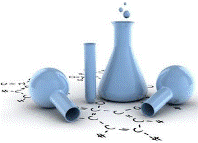Chemical and Biomolecular Engineering, Department of
Date of this Version
2015
Document Type
Article
Citation
Scientific Reports, 5:14894
Abstract
All cyanobacterial membranes contain diesel-range C15-C19 hydrocarbons at concentrations similar to chlorophyll. Recently, two universal but mutually exclusive hydrocarbon production pathways in cyanobacteria were discovered. We engineered a mutant of Synechocystis sp. PCC 6803 that produces no alkanes, which grew poorly at low temperatures. We analyzed this defect by assessing the redox kinetics of PSI. The mutant exhibited enhanced cyclic electron flow (CEF), especially at low temperature. CEF raises the ATP:NADPH ratio from photosynthesis and balances reductant requirements of biosynthesis with maintaining the redox poise of the electron transport chain. We conducted in silico flux balance analysis and showed that growth rate reaches a distinct maximum for an intermediate value of CEF equivalent to recycling 1 electron in 4 from PSI to the plastoquinone pool. Based on this analysis, we conclude that the lack of membrane alkanes causes higher CEF, perhaps for maintenance of redox poise. In turn, increased CEF reduces growth by forcing the cell to use less energy-efficient pathways, lowering the quantum efficiency of photosynthesis. This study highlights the unique and universal role of medium-chain hydrocarbons in cyanobacterial thylakoid membranes: they regulate redox balance and reductant partitioning in these oxygenic photosynthetic cells under stress.



Comments
This work is licensed under a Creative Commons Attribution 4.0 International License.